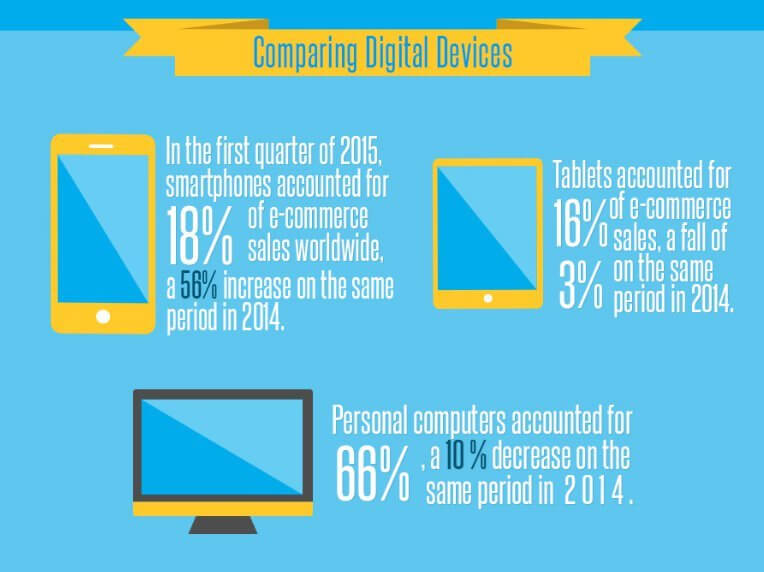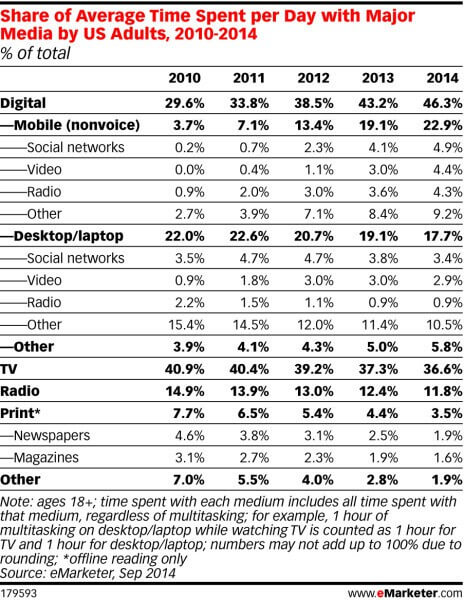5 E-commerce Tips Based on Recent Mobile Market Trends
Mobile devices has changed the way consumers shop and currently they play an important role in the purchase process. We’ve already discussed how important is to develop user friendly experience across all devices. The vast majority of users are likely to leave a website before purchase if the loading time is too long, or site is not optimized well for mobile devices.
It poses a huge challenge for e-commerce companies. They should carefully watch trends of consumer behavior and adjusttheir services to a constantly changing market. We’ve prepared a short lists of m-commerce tips for retailers basing on stats from a cool infographic prepared by SnapParcel.
E-commerce Tips Based on Recent Mobile Trends
1. Provide good user experience across all devices
It is the first and the most important step you should undertake when running an online store. Consumers are really impatient when shopping on the Internet and most of them abandon website if it loads too long. Errors while reading the page may also cause that user will never come back to finish the purchase.
Don’t forget to design a user-friendly site that will encourage visitors for purchase, rather than disincline to your store.
2. Focus on mobile

Smartphone traffic to e-commerce sites is growing much faster than traffic from other devices. Users are increasingly shopping through their mobiles, while sales through PCs has dropped recently. Mobile ads and offers seem to be more effective and lead to better conversion rates.
This all means that, advertisers should adjust their strategy to mobile devices and be more focused on smartphones as their crucial funnel.
3. Adjust your offer to peak shopping times

According to a research, peak online shopping hours are from 8PM to 10PM. It seems reasonable as at that time people tend to have more spare time after work. As your clients are active during the evening, you can offer some discounts and promotions in the morning or afternoon to distribute evenly traffic on your page.
4. Leverage multi-screening

Consumers are switching between devices constantly. Nearly, 60% admit that they browse the Internet while watching TV, often searching for information on something they have just seen. With this knowledge, advertisers can plan integrated multiscreen campaigns that will provide a consistent brand experience across multiple screens.
Remember that each media device fulfills a different role in brand building. For instance, TV helps in generating awareness, while mobile ads can work as an inventive to buy.
5. Be on top of current trends
Digital world is changing in the blink of an eye. What’s popular today, may be out of date tomorrow. Consumers and their behavior is evolving as well. Thus, form a habit of browsing daily news that is related to your industry and current trends. I recommend to leverage the possibilities that Feedly offers. It is a tool that helps you organize content on distinct topics and from different sites through RSS feeds. Every day, spare first 20-30 minutes in the morning for reading latest releases on your favorite blogs.
How M-Commerce is Changing Shopping
Want to know more facts & figures about m-commerce? Check out the infographic by SnapParcel.

How often do you shop through on mobile? Leave us a comment!
Top Reads
Brand Monitoring: Tools & Guide for 2026
Brand Awareness Strategy [The Ultimate Guide for 2026]
The Best AI Hashtag Tracker and Other Hashtag Tracking Tools [2026]
Social Media Reach: How to Measure & Improve It in 2026?
X (Twitter) Analytics Tools: The 10 Best to Try in 2026
Sentiment Analysis: What is it & Why do You Need it in 2026?
Share of Voice: Definition, Calculation, Tools [2026 Guide]
Brand Reputation Management: 6 Expert Tips for 2026
A Complete Guide to AI Social Media Analysis [2025]
How to See How Many Times a Hashtag Was Used on X (Twitter)
Start Social Listening!
Get the Brand24 trial and start social listening like a PRO.
